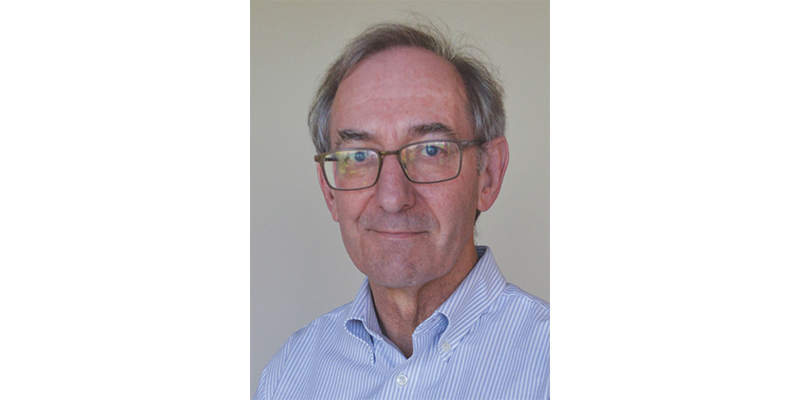March 23, 2021
New research partnership helps measure health of reclaimed wetlands

Alberta’s oilsands are an integral piece of the province’s landscape. Surrounded by Canada’s expansive boreal forest and local wetlands, these areas are teeming with life.
Biologist Dr. Jan Ciborowski, PhD, of the Department of Biological Sciences in the Faculty of Science, has spent his career exploring how human activity affects landscapes and ecosystems of flora and fauna, from insects and fish to vegetation. Now, he has received federal and industry research funding to give energy companies a detailed assessment methodology to measure the heath and success of reclaimed wetlands in the Alberta oilsands, and elsewhere in Canada where extraction disturbs the landscape.
“Recent efforts by oilsands companies to build wetlands in reclaimed watersheds are promising,” says Ciborowski. “But because the wetlands are so young, there are no established criteria by which to judge their ‘success’.”

Jan Ciborowski.
Novel research program to establish scientific guidelines to measure reclaimed wetland health
Ciborowski was recently named the inaugural NSERC/COSIA Industrial Research Chair in Oil Sands Wetland Reclamation. This new Chair program is a partnership between the University of Calgary, the Natural Sciences and Engineering Research Council of Canada (NSERC), and Canada’s Oil Sands Innovation Alliance (COSIA). Over the next five years, Ciborowski and his research team will receive more than $4 million to investigate the ecology of newly developing wetlands recovering from disturbance in landscapes reclaimed from mining.
The team will study the functionality, water quality, and surrounding disturbance features of newly forming wetlands in the post-mining landscape. They will also study aquatic invertebrates, plants, and birds to show which of these features are most important in sustaining biodiversity as wetlands age.
We’re really interested in biota, the animal and plant life found in a particular habitat at a specific point in time and what that says about the area. For example, why are ducks in this particular wetland within a reclaimed area? It’s because that wetland has all the features there, necessary to support them.

Pete's Pond, one of several reclaimed wetlands situated in South Bison Hills.
Syncrude
The tools developed under this research program could be widely applicable to other industries in Canada located in the boreal zone, such as pulp and paper, with potential applications internationally.
“NSERC is pleased to support this Industrial Research Chair, which will be instrumental in guiding the development of wetland reclamation in the mining oilsands landscapes, and provide excellent training opportunities for the next generation of researchers,” says Marc Fortin, NSERC’s vice-president, research partnerships.
“This chair has the potential to produce valuable scientific knowledge that will directly benefit the Canadian oilsands industry, and also have potential application in other fields.”
Partnership to help build research capacity, prepare for the future of energy
The University of Calgary is a leader in energy research.
“Jan Ciborowski is playing a critical role as we continue to address global energy challenges — and the leadership demonstrated by COSIA and NSERC in establishing this chair will ensure that we continue to bring scientific insights to better understand our oilsands, and to develop better technologies and wetlands reclamation practices,” says Dr. William Ghali, vice-president (research) at the University of Calgary.
“COSIA is proud to partner with the University of Calgary on the Industrial Research Chair in Wetlands Reclamation led by Dr. Jan Ciborowski,” says Wes Jickling, BA’01, COSIA chief executive. “Accelerating environmental performance improvement in the oilsands sector is at the very core of our mandate. This includes participating in research programs and minimizing impacts to wetlands, which is why we are proud to partner in this initiative. Dr. Ciborowski has a proven record of leading and developing the best wetland research programs in Canada and beyond. Through this partnership, we will continue to advance wetland reclamation best practices and better inform decision-making for ongoing reclamation work in the oil sands industry, and potentially others.”
Ciborowski’s team includes a number of specialized experts as well as undergraduate, graduate, and postdoctoral students, some of whom will conduct sampling at 120 different wetland sites over the summers.
“We’ve always integrated students into field teams and given them opportunities to learn from company researchers,” says Ciborowski. “It’s an opportunity to train the highly skilled people that are needed by industry and to develop the next generation of reclamation experts.”
Online panel March 25 highlights research into clean water, ecosystem health
Ciborowski will join Jickling and Dr. Kelly Munkittrick, PhD, professor in the Faculty of Science and Campus Alberta Innovation Program Chair in Aquatic Ecosystem Health, on March 25 for an online panel discussion in honour of World Water Day. This free public event, jointly hosted by the Faculty of Science and COSIA, will highlight collaborative research projects involving clean water and ecosystem health in Alberta. The panel will discuss how industry and academic collaborations are vital to building an innovative economy. Register to attend.






